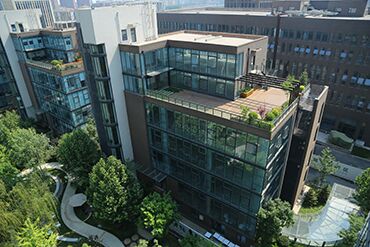Listen to part of a lecture in an art history class.
OK. As art historians, one of our fundamental taste is to assign ownership to works of art, right?
We're presented with a work of art, and we have to figure out who made it.
But this task becomes particularly difficult when we're dealing with works produced in Italy during the Renaissance, the 16th, 17th centuries.
Now, why is this the case?
Anyone? Emily.
Um...is it 'cause artists didn't sign their work?
I mean, didn't the whole concept of the artist as an individual developed later? In like the 19th century?
Well, you are sort of on the right track.
The concept of the individual artist, especially the concept of the artist as an artistic genius struggling alone with a vision as opposed to...say...a mere artisan...well, the idea of the artist as a lone genius didn't develop until later.
But artists, individual artists, did sign their work during the Renaissance.
In fact, you could say that's part of the problem.
Paintings were signed by the artist and that used to be understood to be a mark of Renaissance's individualism.
If a piece had Raphael's signature on it, we assume it was done by the great artist himself Raphael, in the singular.
But you see, art in Renaissance Italy was very much a collaborative business.
Painters and sculptors worked in a workshop.
It was almost like a small business run by a master artist.
You see, to deal with a wide variety of commissions they received, orders basically, for specific types of art, specific projects, to handle these, master artists often employed assistants as apprentices.
And this was especially so if they worked on a large scale, huge paintings or sculptures, or if they were much in demand, like Raphael, for instance.
He worked on some large paintings.
He painted frescos for the Vatican1.
He also received a great many commissions.
There's no way he could have completed every part of every project all by himself.
Now, these assistants might work for the master artist on a temporary or a permanent basis.
And they might also specialize.
For example, in Raphael's workshop, which might be called Raphael incorporated, one of the assistants specialized in animals.
He actually painted a good number of the animals in Raphael's art.
It maybe that a master signing a work was simply making a declaration that the work met the standards of the shop.
And it wasn't just painters.
Sculptors also worked together.
In fact, assistants were even more necessary if you were a master sculptor because statues take longer to make than paintings.
And the master had to arrange for marble to be quarried, things like that.
Perhaps the most collaborative of all was architecture.
There we see a real division of labor, but with carpenters, masons, unskilled labor just to carry materials to and fro, and so on.Plus, of course, your skilled artisans who carried out the master architect's design.
Think of it, like, um, a ballet, you know.
All the dancers work together.
There's a division of labor. People have different roles.
And in order for the thing to come together, everyone needs to be aware of what others are doing and coordinate their work and have good timing.
So for architecture, it's almost impossible to know who was responsible for any given detail.
Was it the master architect?
The mason? An assistant mason?
Maybe it was even the patron, the client who was paying for the art.
Remember, it wasn't yet customary for architects to give their assistants measured drawings to work from.
Instructions were given orally, not in writing. So we don't have those documents to tell us what exactly the master architect's plans were.
The only time we have written records is when the architect wasn't actually there.
Perhaps the architect was away on business and had to write out instructions and send them to the shop.
And another thing to think about: What effect do you suppose this approach would have had on innovation?
I mean, since the hired artisans had been trained by other artisans, they tended to be trained to use traditional styles and techniques.
So if you're a master architect, uh, you've developed your own style.
Say you're calling for certain detail in the building you're designing, right?
And say this detail is different, purposely different, from the established tradition, the established style.
Well, most likely when the hired artisans would execute the design, rather than follow the intended design, they would stick with the more traditional style that they were familiar with.
Workers would have to be supervised very closely to prevent this from happening.
Otherwise, as it often happened, there goes the designer's style and creativity.

















 分享成功
分享成功

















草莓小菇凉:说的非常好,十分有道理,棒棒棒!
06-08 15:44:55